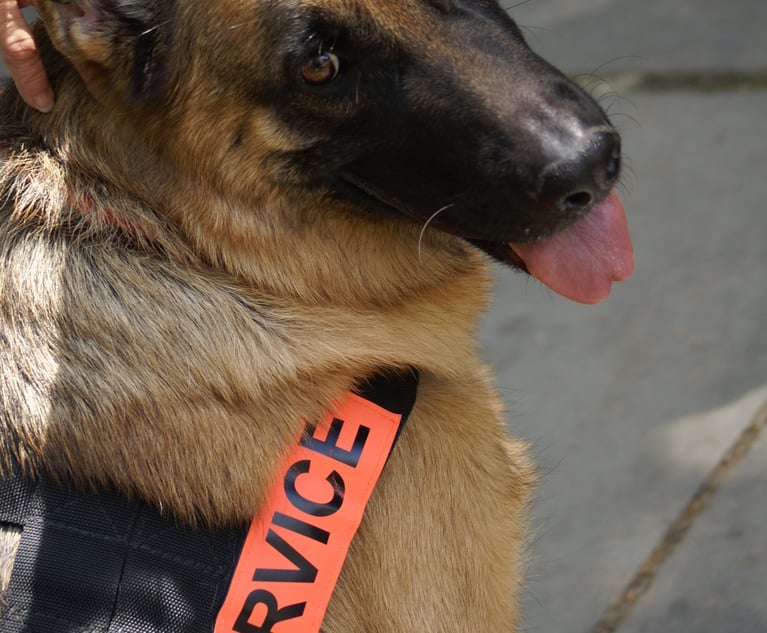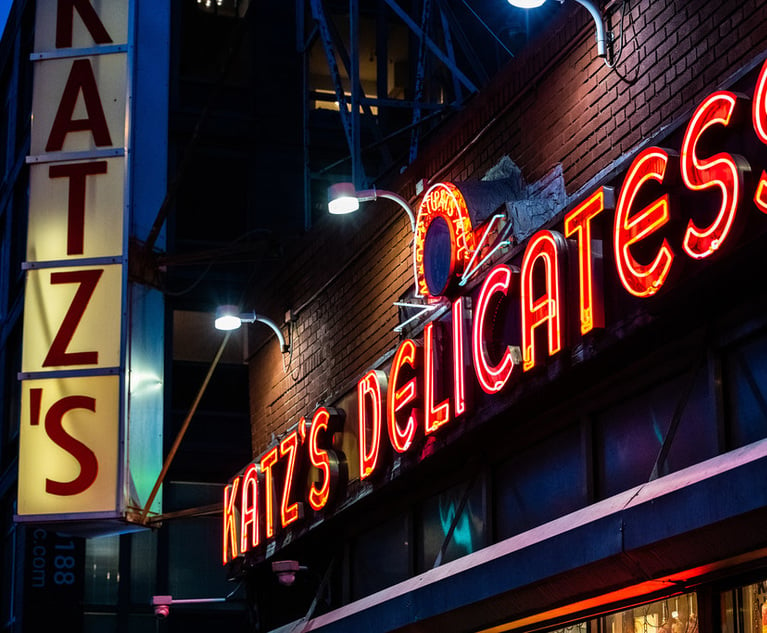Be Careful What You Wish For
I lived my youth in the rural south. I was educated at a Southern university where Robert E. Lee is entombed, located in a Virginia town where Stonewall Jackson is also buried and memorialized. Being a Jew, I witnessed and personally suffered the pain inflicted by anti-Semites. But we are a forgiving people. I hope Mayor de Blasio can find it in his heart to forgive the sins of some others whose "hateful" monuments his commission will consider removing.
August 31, 2017 at 02:00 PM
11 minute read
I lived my youth in the rural south. I was educated at a Southern university where Robert E. Lee is entombed, located in a Virginia town where Stonewall Jackson is also buried and memorialized. I was inducted into the Army and served at a military post in Georgia named after a Confederate General.
Being a Jew, I witnessed and personally suffered the pain inflicted by anti-Semites. I have looked into the faces of anti-Semitic white racists and seen and felt their vicious hatred. Those were the same faces I saw on those marchers in Charlottesville who, the night before the riot, carried torches and chanted “the Jews will not replace us,” and the Nazi idealization of hate: “blood and soil.” There are an overwhelming number of Southerners who are “very nice” people, but there was not a single “nice person” marching with those anti-Semitic bigots on the UVA campus.
In August 1991, I saw those same faces in Crown Heights, Brooklyn, but this time they were black faces. Al Sharpton helped precipitate a riot in a predominantly Jewish neighborhood, taunting “If the Jews want to get it on, tell them to pin their yarmulkes back and come over to my house.” That riot resulted in the brutal stabbing death of an innocent rabbinical student and was characterized by Edward S. Shapiro, a historian at Brandeis University, as “the most serious anti-Semitic incident in American history.” That was followed by Sharpton's participation in what was known as the Freddie's Fashion Mart Massacre in Harlem, where Sharpton railed against a Jewish “white interloper” whose store was burned to the ground while eight people were murdered.
This content has been archived. It is available through our partners, LexisNexis® and Bloomberg Law.
To view this content, please continue to their sites.
Not a Lexis Subscriber?
Subscribe Now
Not a Bloomberg Law Subscriber?
Subscribe Now
NOT FOR REPRINT
© 2025 ALM Global, LLC, All Rights Reserved. Request academic re-use from www.copyright.com. All other uses, submit a request to [email protected]. For more information visit Asset & Logo Licensing.
You Might Like
View All
Decision of the Day: Shelter Resident May Have Service Dog Named 'Nightmare' Wherever She Resides

Anti-Abortion Groups' Challenge to New York's 'Boss Bill' Is Returning to Federal Trial Court

NYC’s Oldest Deli Agrees to Update Bathrooms, Entrances to End ADA Charges
4 minute readTrending Stories
- 1Courts, Lawyers Press On With Business as SoCal Wildfires Rage
- 2Florida, a Political Epicenter, Is the Site of Brownstein Hyatt's 13th Office
- 3Law Firms Close Southern California Offices Amid Devastating Wildfires
- 4Lawsuit alleges racial and gender discrimination led to an Air Force contractor's death at California airfield
- 5Holland & Knight Picks Up 8 Private Wealth Lawyers in Los Angeles
Who Got The Work
Michael G. Bongiorno, Andrew Scott Dulberg and Elizabeth E. Driscoll from Wilmer Cutler Pickering Hale and Dorr have stepped in to represent Symbotic Inc., an A.I.-enabled technology platform that focuses on increasing supply chain efficiency, and other defendants in a pending shareholder derivative lawsuit. The case, filed Oct. 2 in Massachusetts District Court by the Brown Law Firm on behalf of Stephen Austen, accuses certain officers and directors of misleading investors in regard to Symbotic's potential for margin growth by failing to disclose that the company was not equipped to timely deploy its systems or manage expenses through project delays. The case, assigned to U.S. District Judge Nathaniel M. Gorton, is 1:24-cv-12522, Austen v. Cohen et al.
Who Got The Work
Edmund Polubinski and Marie Killmond of Davis Polk & Wardwell have entered appearances for data platform software development company MongoDB and other defendants in a pending shareholder derivative lawsuit. The action, filed Oct. 7 in New York Southern District Court by the Brown Law Firm, accuses the company's directors and/or officers of falsely expressing confidence in the company’s restructuring of its sales incentive plan and downplaying the severity of decreases in its upfront commitments. The case is 1:24-cv-07594, Roy v. Ittycheria et al.
Who Got The Work
Amy O. Bruchs and Kurt F. Ellison of Michael Best & Friedrich have entered appearances for Epic Systems Corp. in a pending employment discrimination lawsuit. The suit was filed Sept. 7 in Wisconsin Western District Court by Levine Eisberner LLC and Siri & Glimstad on behalf of a project manager who claims that he was wrongfully terminated after applying for a religious exemption to the defendant's COVID-19 vaccine mandate. The case, assigned to U.S. Magistrate Judge Anita Marie Boor, is 3:24-cv-00630, Secker, Nathan v. Epic Systems Corporation.
Who Got The Work
David X. Sullivan, Thomas J. Finn and Gregory A. Hall from McCarter & English have entered appearances for Sunrun Installation Services in a pending civil rights lawsuit. The complaint was filed Sept. 4 in Connecticut District Court by attorney Robert M. Berke on behalf of former employee George Edward Steins, who was arrested and charged with employing an unregistered home improvement salesperson. The complaint alleges that had Sunrun informed the Connecticut Department of Consumer Protection that the plaintiff's employment had ended in 2017 and that he no longer held Sunrun's home improvement contractor license, he would not have been hit with charges, which were dismissed in May 2024. The case, assigned to U.S. District Judge Jeffrey A. Meyer, is 3:24-cv-01423, Steins v. Sunrun, Inc. et al.
Who Got The Work
Greenberg Traurig shareholder Joshua L. Raskin has entered an appearance for boohoo.com UK Ltd. in a pending patent infringement lawsuit. The suit, filed Sept. 3 in Texas Eastern District Court by Rozier Hardt McDonough on behalf of Alto Dynamics, asserts five patents related to an online shopping platform. The case, assigned to U.S. District Judge Rodney Gilstrap, is 2:24-cv-00719, Alto Dynamics, LLC v. boohoo.com UK Limited.
Featured Firms
Law Offices of Gary Martin Hays & Associates, P.C.
(470) 294-1674
Law Offices of Mark E. Salomone
(857) 444-6468
Smith & Hassler
(713) 739-1250







